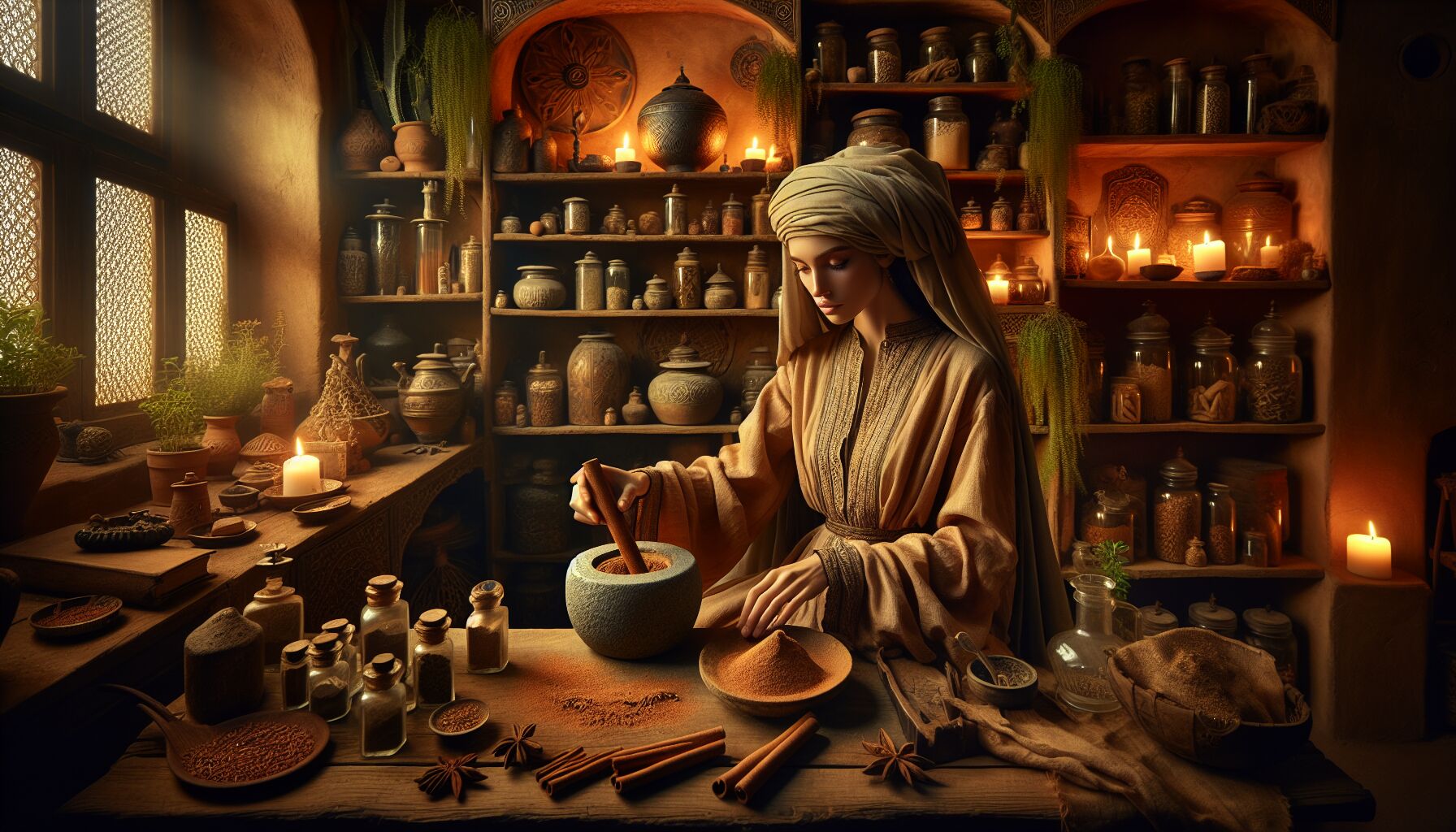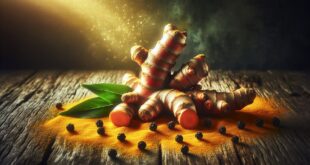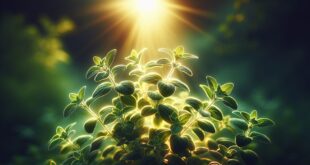 Cinnamon, a spice familiar to most as a kitchen staple today, has a rich history that stretches back centuries. Shaped by time and tradition, it held a place of honor in the tapestry of ancient cultures. Imagine bustling markets filled with exotic spices from lands near and far, where cinnamon was not just a fragrant addition to food but a prized commodity—akin to gold.
Cinnamon, a spice familiar to most as a kitchen staple today, has a rich history that stretches back centuries. Shaped by time and tradition, it held a place of honor in the tapestry of ancient cultures. Imagine bustling markets filled with exotic spices from lands near and far, where cinnamon was not just a fragrant addition to food but a prized commodity—akin to gold.
In ancient Egypt, cinnamon was as intriguing as the pyramids themselves. It wasn’t merely for flavor. This potent spice was used in embalming practices, believed to help preserve mummies for their journey into the afterlife. The Egyptians recognized cinnamon’s natural properties, embedding it in their rituals that linked the mundane with the celestial.
Over in ancient China, cinnamon was revered for its perceived warming qualities, etched into the annals of traditional Chinese medicine. This wasn’t just about the spice rack—it was about balance, about yin and yang. As famous philosopher Lao Tzu might remind us, “Nature does not hurry, yet everything is accomplished,” and cinnamon seemed to harmonize health with nature’s mysteries—a beacon of wellness in uncertain times.
Fast forward to the Roman Empire, where cinnamon was worth more than silver. Roman emperors would indulge in it during lavish feasts, orchestrating an aromatic dance that captivated the senses and the social elite. Imagine the aroma wafting through opulent halls, tingeing conversations with its sweet, woody notes. Romans used it in perfumes, perhaps recognizing its anti-inflammatory properties in a time when resilience was key.
The spice also wove its way through the threads of medieval Europe, a symbol of affluence and taste. With its journey from Sri Lanka through the perilous Silk Road, cinnamon became a catalyst for trade expeditions and a linchpin in the culinary traditions that spanned continents. It fascinated explorers and traders, ensuring its place in the annals of history.
Perhaps most striking is how various ancient cultures tapped into cinnamon’s wondrous versatility. This small, unassuming bark was an early player in what we might call “ancient medicine,” showcasing its anti-inflammatory powers well before modern science validated such uses.
Today, as we sprinkle it over oatmeal or stir it into a steaming cup of tea, there’s an invisible thread connecting us to the ancients. Their wisdom resonates, reminding us of our ancestors’ profound understanding and respect for nature’s gifts. As you ponder this, consider the journey of cinnamon—a spice as enduring as the practices it inspired.
Understanding its historical significance helps us remember that wisdom can often come wrapped in unlikely packages. For those endeavoring to trace the footsteps of time and embrace a more natural living, it becomes clear that true interconnectedness lies in the continuity and reverence of such rich traditions.
For those who wish to delve deeper into the fascinating world of ancient spices, resources like the U.S. Department of Energy or NCBI offer insights into the energy and vitality these natural elements can bring. As we continue our journey, it becomes evident that these cultural legacies are not just relics of the past, but potent reminders of the intertwined cycles of history and healing.
Cinnamon in traditional medicine
Cinnamon has long been a cornerstone in traditional medicine, acting as a bridge between the natural world and human well-being. For millennia, practitioners across diverse cultures tapped into its gifts. Isn’t it remarkable how a simple piece of bark could hold such an esteemed role in the healing arts?
In Ayurvedic practice, which is often considered one of the world’s oldest holistic healing systems, cinnamon was used to enhance digestion and metabolism—known as “Agni” in Sanskrit, relating to the body’s inner fire. Cinnamon’s warming nature was believed to kindle this fire, aiding in the assimilation of nutrients while flushing out toxins. It was more than just a spice; it was a collaborator in the dance of health and vitality.
Let’s move over to the realm of traditional Chinese medicine (TCM), where cinnamon is esteemed as a “hot” herb, perfect for warming what the Chinese call “cold” bodies, especially in winter. It is often utilized in teas or herbal formulations aimed at banishing chills, improving circulation, and even alleviating aches and pains. This is a practice where the elements and human life are seen as part of a larger orchestra, playing in harmony and balance. Consider this idea: when we’re cold, we crave warmth. Cinnamon answers that call, doesn’t it?
The ancient Greeks and Romans also cherished cinnamon for its medical prowess, using it as a treatment for indigestion and other digestive complaints. The famed Greek physician Hippocrates is believed to have used it extensively. “Let food be thy medicine and medicine be thy food,” he once said—and cinnamon fit neatly into that philosophy.
In the medieval Islamic world, noted scholars and physicians like Avicenna wrote about cinnamon’s properties, integrating it into their rich pharmacopeia. Reflecting on their works, it’s fascinating to see how cinnamon was considered a remedy not only for physical ailments but also as a means of enhancing one’s spirit, acting as a bridge to higher states of consciousness.
Modern herbalists still rely on centuries-old wisdom, valuing cinnamon for its potential anti-inflammatory benefits. Scientific studies have started to shed light on these uses, offering evidence that could support what ancient healers knew through intuition and experience. Isn’t it satisfying when science and tradition find common ground?
Cinnamon’s role wasn’t merely functional; it sparked an ongoing conversation about the intrinsic connection between us and nature. And in an era that often feels detached from natural rhythms, perhaps there’s comfort in knowing that something as unassuming as cinnamon can help rekindle our wellness journey. Whether it’s a pinch in your morning coffee or a touch in your evening stew, it’s like inviting a whisper of ancient medicine into your day—a gentle reminder that sometimes, simplicity holds the deepest wisdom.
Next time you find yourself reaching for that hint of spice, consider the legacy you’re partaking in. Century after century, cinnamon has been more than a culinary delight; it’s been a silent healer, a companion in humanity’s search for health, beautifully embodying the intersection of everyday life and ancient medicine.
Modern research on cinnamon’s health benefits
 In the world of modern science, cinnamon has been thrust into the spotlight, revealing layers of potential that echo back to whispers of ancient medicine. Nowadays, researchers are diving deep into the molecular magic of this spice, intrigued by its myriad of health benefits. So, what exactly makes cinnamon such a dynamo in the realm of wellness?
In the world of modern science, cinnamon has been thrust into the spotlight, revealing layers of potential that echo back to whispers of ancient medicine. Nowadays, researchers are diving deep into the molecular magic of this spice, intrigued by its myriad of health benefits. So, what exactly makes cinnamon such a dynamo in the realm of wellness?
Consider blood sugar, for instance—an issue many grapple with silently. Cinnamon has shown promising results in stabilizing blood glucose levels, a revelation supported by clinical studies. Those tiny compounds known as polyphenols may, in fact, play a significant role here. Imagine sipping on a steamy cinnamon-infused tea as it quietly works its magic, nudging your internal systems toward better balance.
But it doesn’t stop there. The term “anti-inflammatory” seems to dance hand in hand with cinnamon, a partnership scientifically recognized today. With inflammation implicated in numerous chronic conditions, from heart disease to arthritis, the potential of cinnamon’s soothing properties could be a game-changer. It’s fascinating to think that a dash of this spice might just help in cooling the fiery pangs inflammation can stir. For more information, you can explore the National Center for Biotechnology Information (NCBI) for insights into these findings.
Have you ever wondered if something so earthy as cinnamon could protect the brain? Emerging research suggests it might. By potentially inhibiting the build-up of proteins associated with neurodegenerative diseases such as Alzheimer’s, cinnamon whispers of a novel frontier in brain health. This isn’t just ancient wisdom; it’s a meeting point where old-world practices and cutting-edge research intersect.
Yet, the joy of cinnamon’s benefits isn’t limited to profound health issues. Its antimicrobial properties, backed by scientific validation, help in everyday applications like preserving food or promoting oral health. Imagine a scenario where your evening herbal concoction does everything from quieting the mind to keeping pesky bugs at bay.
Intriguingly, the aromatic allure of cinnamon often reminds us that well-being isn’t solely about the physical. Just smelling cinnamon’s inviting fragrance can evoke warmth and comfort, knitting together the mind and body—a small solace in stressful times. Harvard’s findings on the effects of scent on mood shine a light on how this humblest of spices might brighten our spirits, a reminder that simple pleasures can leave lasting impressions.
As you stir cinnamon into your life, ponder the links between ancient knowledge and present-day discoveries. Think of the spice as a humble ambassador of timeless wisdom wrapped in modern validation—a beautiful weaving of the past, lending healing threads to the future. When you take that first fragrant whiff, remember, you’re not just indulging your senses, but engaging in a tradition that spans centuries, echoing back to the ancients who intuited its myriad benefits.
 DS Haven In Light Of Things
DS Haven In Light Of Things






